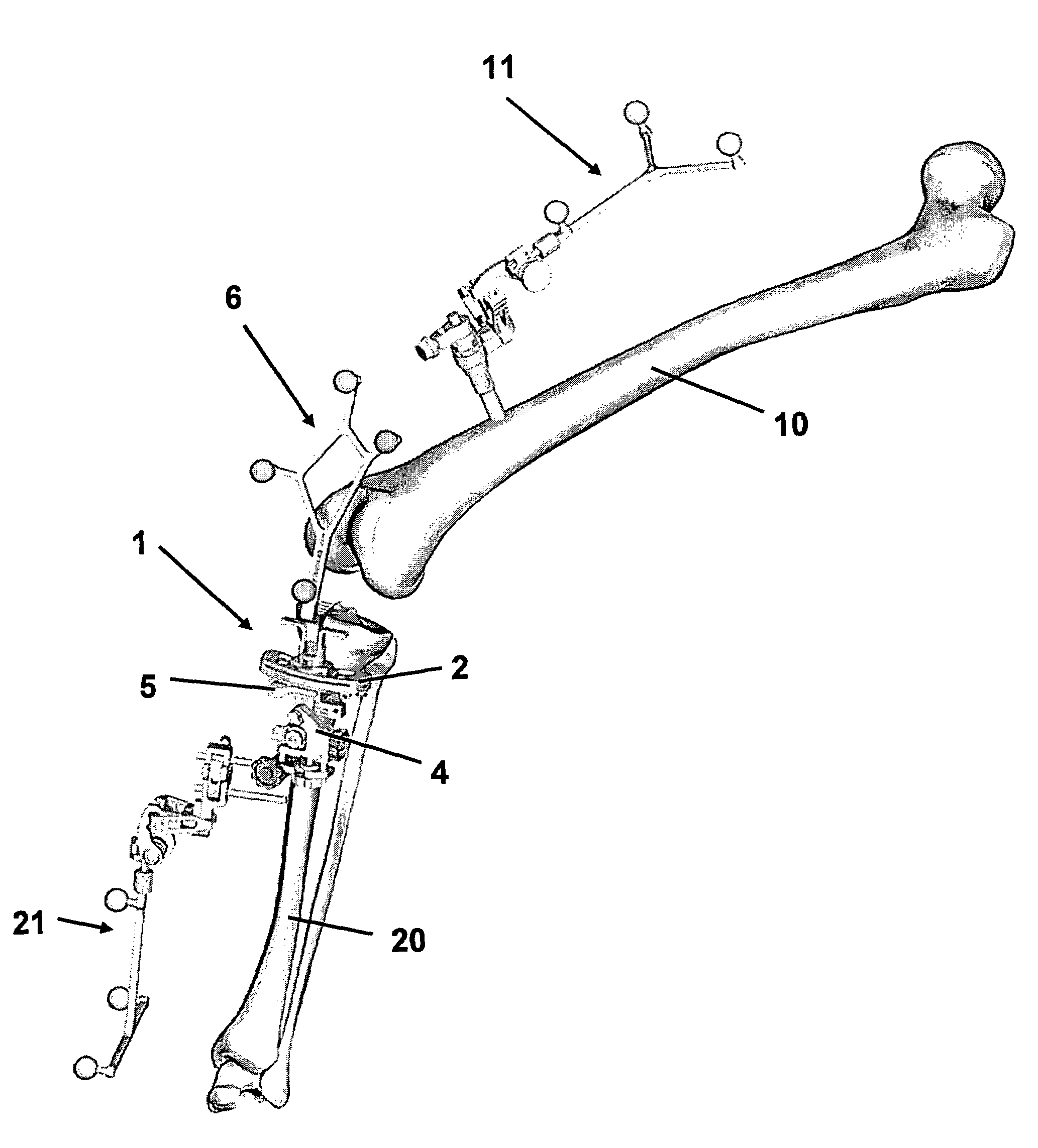User guidance in adjusting bone incision blocks
a bone incision block and user technology, applied in the field of user guidance in adjusting the bone incision block, can solve the problem of not being able to intuitively predict the effect, and achieve the effect of saving tim
- Summary
- Abstract
- Description
- Claims
- Application Information
AI Technical Summary
Benefits of technology
Problems solved by technology
Method used
Image
Examples
first embodiment
[0037]In order to provide user guidance, it is necessary to know the spatial position of the adjustment device 4 (especially with respect to the bone to be treated). In a first embodiment, this purpose is served by the registration point 5, which is embodied as a depression at the top end of the adjustment device 4. The tip of a navigable pointer, for example, can be inserted into such a depression to determine the spatial position of the depression 5 (and therefore the adjustment device 4) using the navigation system. The information thus obtained, combined with the information on the position of the localization reference 6, is sufficient to determine the position of the adjustment device on the bone. Based on this information, instructions for the setting process (i.e., for reaching the target incision plane) are derived.
[0038]The adjustment device 4 has three hand wheels 42, 43 and 44 using which the incision guide 2 can be tilted around two non-parallel axes and adjusted in hei...
second embodiment
[0045]FIG. 9 shows the incision block, wherein a two-dimensional registration element 5 is provided. The two-dimensional registration element 5 is useful when pre-defined configurations between the adjustment device 4 and the incision guide 2 are not provided or not possible. In such situations, correlations via characteristic distances 7 and angular relationships (which are stored in the database) cannot be performed. Using two-dimensional registration elements allows the incision guide 2 to move freely within the incision plane, wherein the information regarding the incision plane is provided as usual to the navigation system via the localization reference 6. Additionally, the position of the adjustment device on the bone is determined with the aid of the two-dimensional registration element 5 (e.g. two points or a bore forming the normal vector of a plane).
[0046]FIG. 10 shows the registration process of an incision block 1 including a registration element 5, which in the present ...
PUM
 Login to View More
Login to View More Abstract
Description
Claims
Application Information
 Login to View More
Login to View More - R&D
- Intellectual Property
- Life Sciences
- Materials
- Tech Scout
- Unparalleled Data Quality
- Higher Quality Content
- 60% Fewer Hallucinations
Browse by: Latest US Patents, China's latest patents, Technical Efficacy Thesaurus, Application Domain, Technology Topic, Popular Technical Reports.
© 2025 PatSnap. All rights reserved.Legal|Privacy policy|Modern Slavery Act Transparency Statement|Sitemap|About US| Contact US: help@patsnap.com



